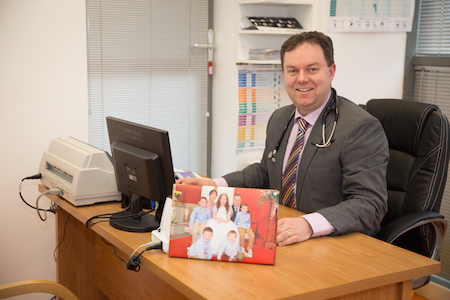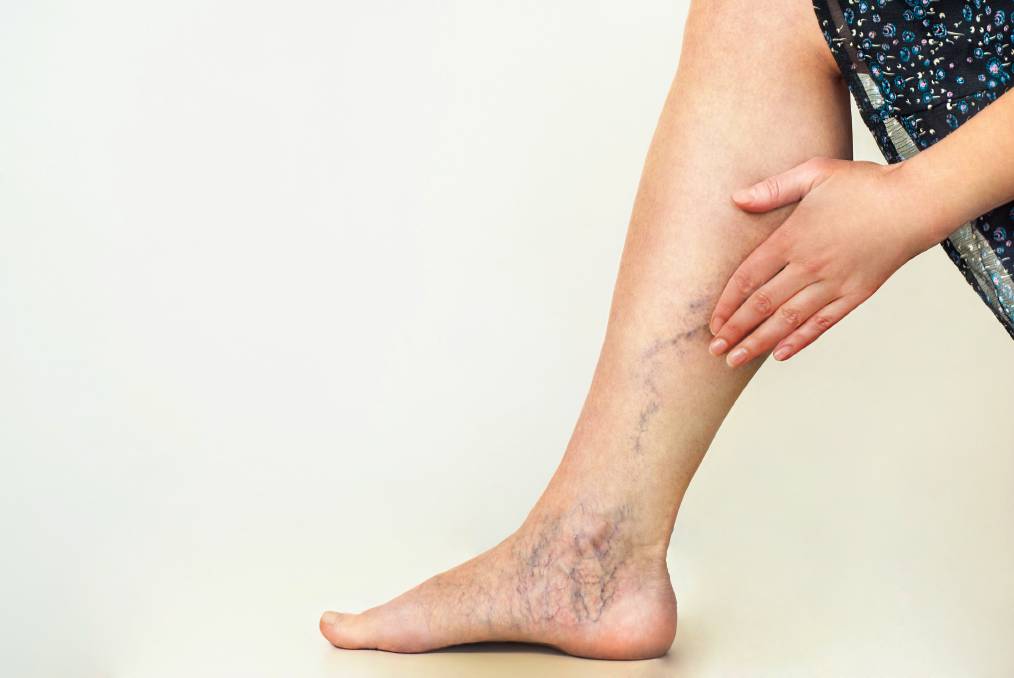This week Dr Roarty of Scally McDaid Roarty Medical Practice talks about the common problem of varicose veins.

Dr Ciaran Roarty at the Scally McDaid Roarty surgery in Letterkenny.
Varicose veins are swollen or dilated sections of veins, usually in the leg, which are quite superficial (just under the skin). They have a typical thick looking appearance though they can be harder to see if you are overweight.
Veins carry the blood back to the heart from the body and smaller veins empty into large veins until the blood reaches the heart.
In the leg, we find deep veins, superficial veins and small connecting veins which carry blood from the superficial veins to the deeper veins. The large veins have valves so that when we stand, the blood doesn’t all fall back towards our feet.
With varicose veins these valves become damaged and do not work properly. Damage to one valve puts more pressure on others and so blood pools in the damaged vein and becomes more prominent.
What causes varicose veins?
It tends to occur more commonly in women. About 3 in 100 people develop the problem at some stage in their lives and very often there is no apparent reason.
Certain things do increase the chances of developing varicose veins however eg pregnancy, older age, being overweight ( more so in females) and standing a lot.
A previous deep vein clot or thrombosis or injury to a deep vein may predispose to varicose veins and very rarely a pelvic swelling may block the blood flowing in veins at the top of the leg.
What are the symptoms?
Very often there none, other than their appearance. Larger ones can ache or become itchy.
Complications develop in some people over the years after varicose veins appear. These include swelling of the lower leg, skin changes ( varicose eczema) and inflammation of the vein ( thrombophlebitis).
Very rarely bleeding can occur and this treated with compression and elevation.
What is the treatment for varicose veins?
Most do not need treatment. However if complications such as leg swelling, skin changes or ulcers occur, it may be advised. Other reasons include itch or cosmetic reasons. If you have both varicose veins and arterial disease (arteries carry blood away from the heart) certain tests are required before treatment.
There are several treatment options. You may ease your own symptoms with common sense measures such as not standing for long periods and putting your feet up frequently.
Moisturising creams will help alleviate skin changes and itch. Weight loss will help prevent the problem of varicose veins in the first place.
Traditional operations have their role but newer, more modern, treatments such as laser ablation or radiofrequency ablation are becoming more commonly used.
Foam sclerotherapy is also a newer treatment where foam is injected into the veins.
Traditional surgery may be advised if the above treatments do not work or are unavailable and this is often done as a day case. The surgeon removes larger veins after tying off connections to smaller veins.
Compression stockings and tights help ease symptoms such as ache and are recomended where treatments to seal the veins didn’t work or are not suitable.
The above information is intended as advice only and should you have any concerns please contact your own Doctor.
Dr Ciarán Roarty MB, BCh BAO MICGP DRCOG Grad. Cert. Obst. Ultrasound is a full-time GP at Scally McDaid Roarty Medical Practice , Scally Place, Letterkenny, Tel 0749164111
Tags:







